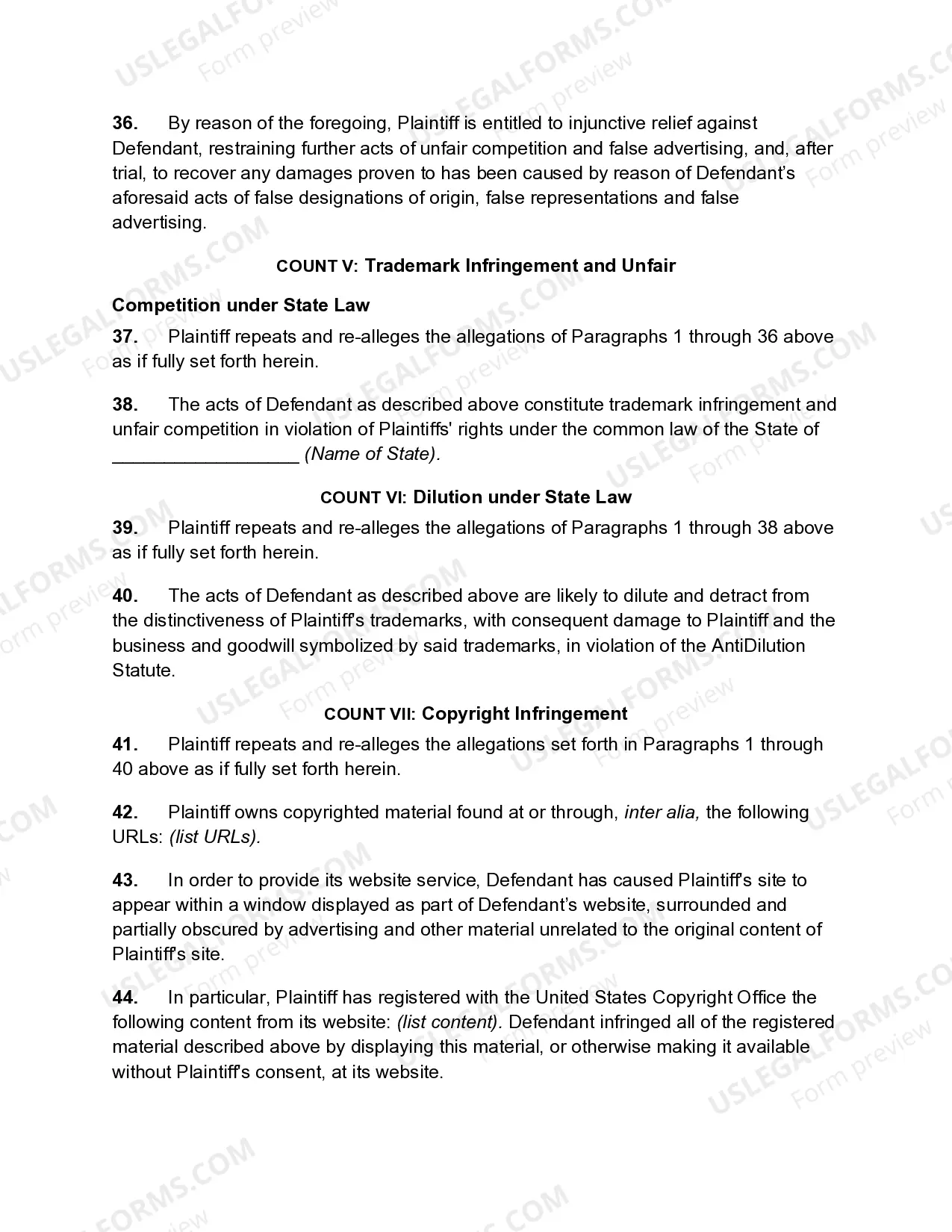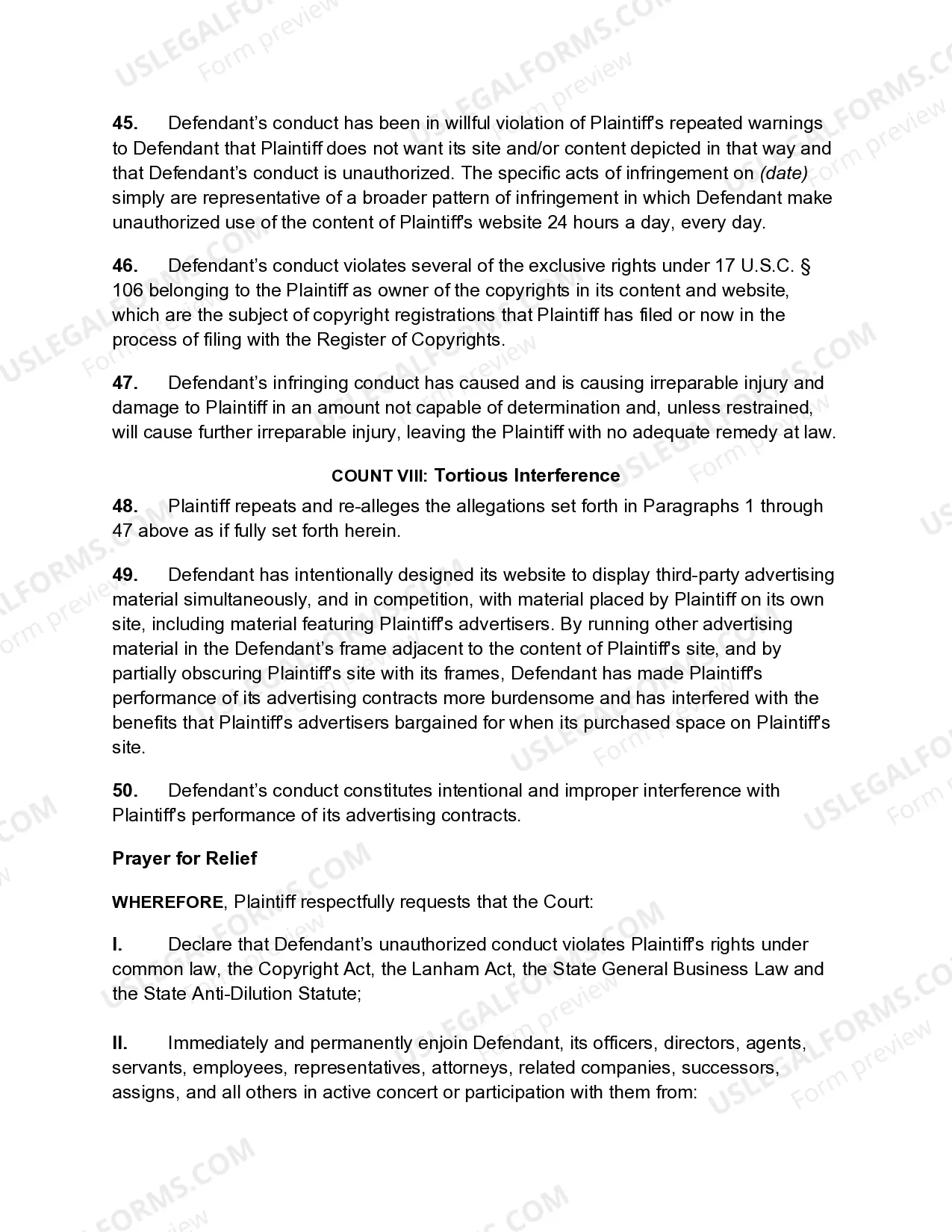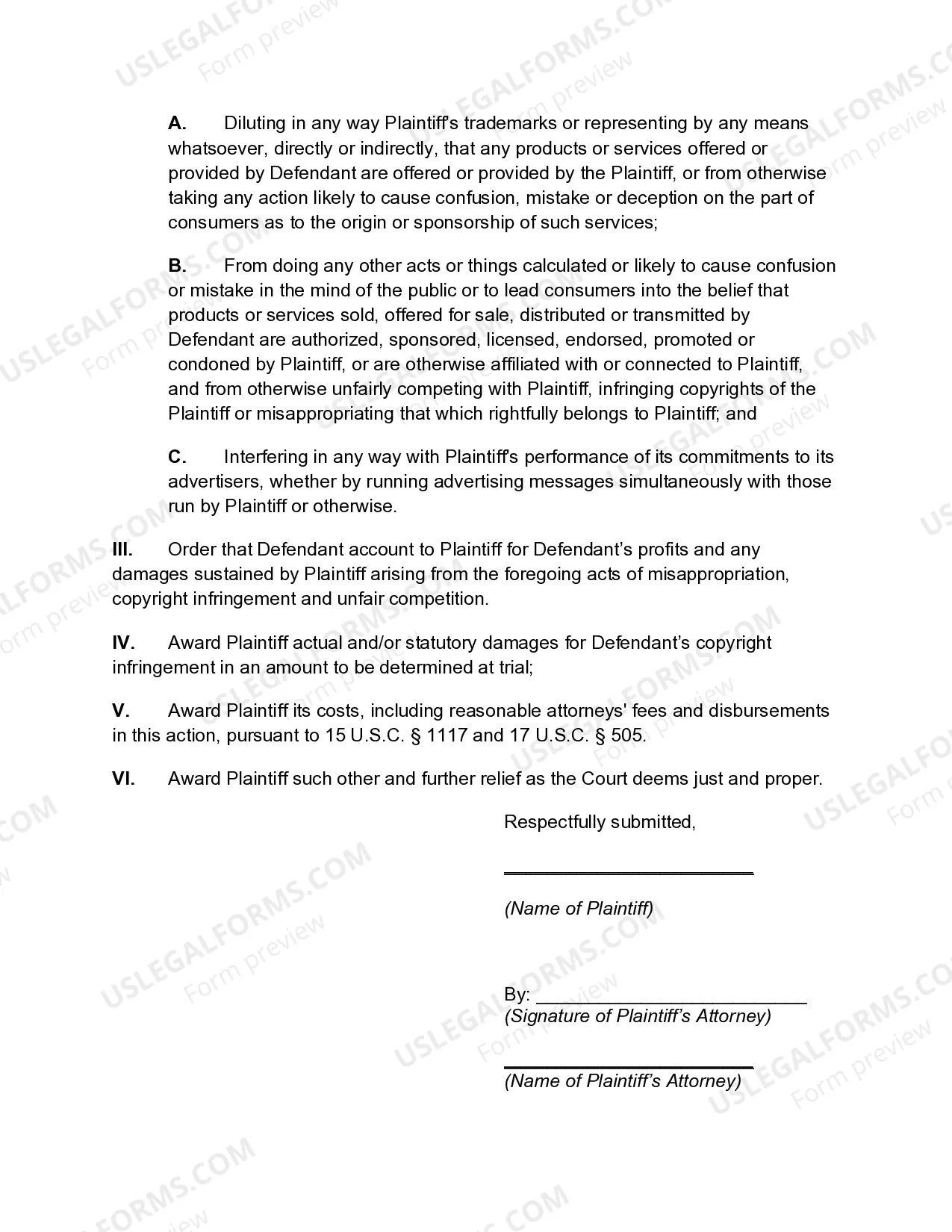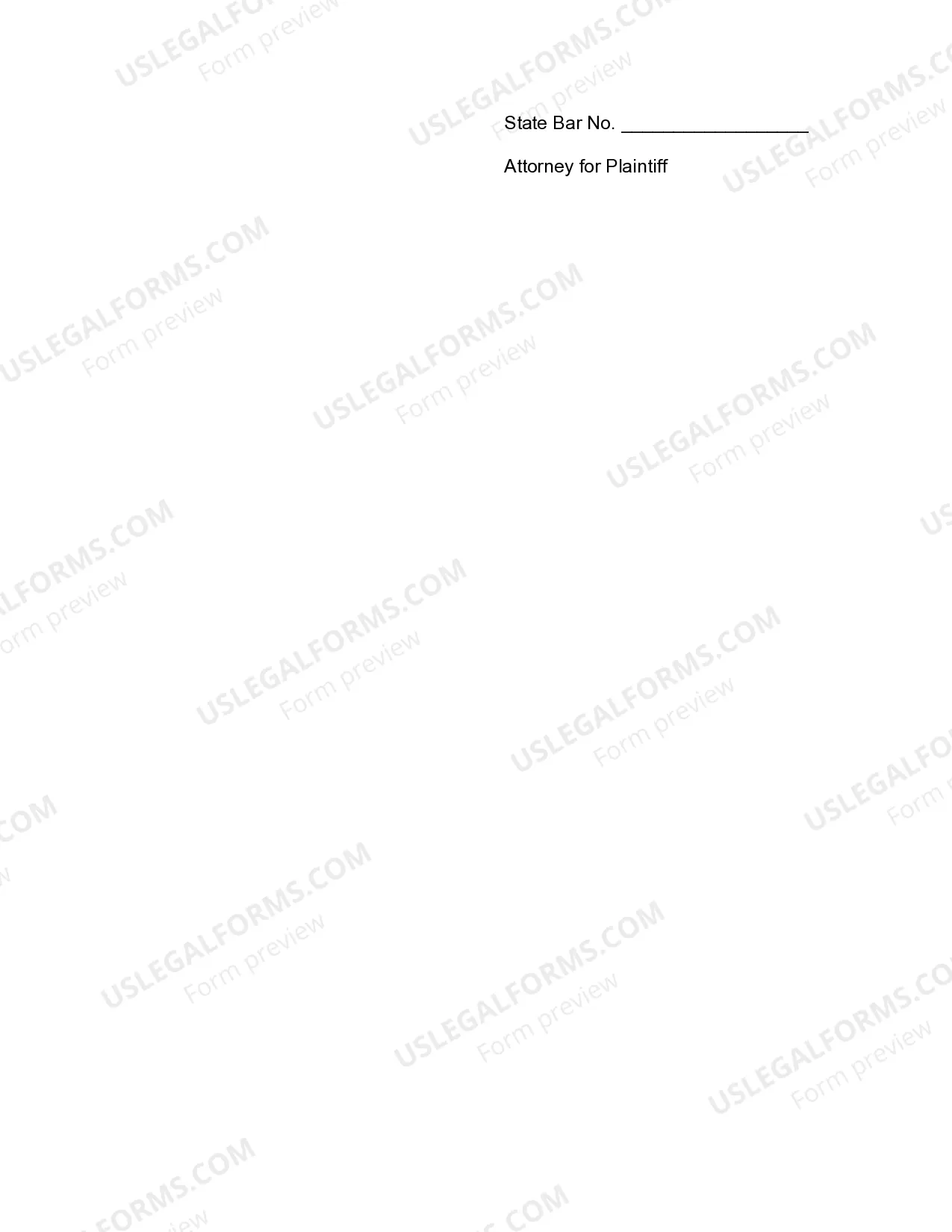West Virginia Complaint for Copyright and Trademark Infringement Based on Website Framing typically refers to a legal document filed in the state of West Virginia to address copyright and trademark infringement issues caused by website framing. Website framing involves the act of displaying content from one website within the frame of another website, often without obtaining permission or proper attribution. Here are some details that can be included: 1. Introduction to West Virginia Complaint for Copyright and Trademark Infringement Based on Website Framing: In this section, the purpose and relevance of the complaint can be highlighted. It may mention that the complaint is filed to protect intellectual property rights and address infringement caused by improper website framing. 2. Parties Involved: The complaint will identify the parties involved, usually the plaintiff (the party claiming infringement) and the defendant (the party allegedly committing infringement). It may mention the name and contact information of both parties. 3. Jurisdiction: This section will outline the appropriate court in West Virginia where the complaint is being filed. It will state the reasons for selecting that particular court and establishing its authority over the matter. 4. Allegations of Copyright and Trademark Infringement: This part will detail the copyrighted or trademarked work that has allegedly been infringed upon through website framing. It should include a comprehensive description of the original work and evidence of its protection under copyright or trademark laws. 5. Website Framing: The complaint will explain the concept of website framing, emphasizing how it involves the unauthorized display of copyrighted or trademarked content from another website within the frame of the defendant's website. It may provide examples and discuss how this act violates the plaintiff's intellectual property rights. 6. Notice of Infringement: This section may address whether the plaintiff had previously issued a notice to the defendant, informing them of the infringement and requesting them to cease the use of framed content. It will specify the details of such notice and any responses received, or lack thereof. 7. Damages and Relief Sought: Here, the plaintiff will state the type of relief sought, such as injunctive relief to cease the infringing activities and monetary damages for the harm caused. The complaint may also seek legal fees and any other appropriate remedies provided by the law. Additional Types of West Virginia Complaints for Copyright and Trademark Infringement Based on Website Framing: 1. Class Action Complaint: This type of complaint can be filed when multiple individuals or entities have suffered the same copyright and trademark infringement due to website framing. It allows them to consolidate their claims into one lawsuit. 2. Preliminary Injunction Complaint: In this case, the plaintiff requests an emergency order from the court to immediately prohibit the defendant from engaging in further website framing activities prior to a full trial. It is aimed at preventing ongoing harm. These are just a few examples of West Virginia Complaints for Copyright and Trademark Infringement Based on Website Framing. Proper legal research is necessary to identify any specific subcategories or variations associated with these types of complaints in the state of West Virginia.
West Virginia Complaint for Copyright and Trademark Infringement Based on Web Site Framing
Description
How to fill out West Virginia Complaint For Copyright And Trademark Infringement Based On Web Site Framing?
Choosing the best lawful record format can be a battle. Needless to say, there are plenty of templates available on the net, but how do you obtain the lawful kind you will need? Use the US Legal Forms website. The services provides 1000s of templates, like the West Virginia Complaint for Copyright and Trademark Infringement Based on Web Site Framing, that can be used for company and private demands. All of the kinds are inspected by specialists and satisfy state and federal needs.
Should you be currently signed up, log in for your bank account and click the Acquire key to have the West Virginia Complaint for Copyright and Trademark Infringement Based on Web Site Framing. Utilize your bank account to check throughout the lawful kinds you have ordered formerly. Go to the My Forms tab of your respective bank account and obtain one more backup of your record you will need.
Should you be a brand new end user of US Legal Forms, allow me to share basic recommendations that you should adhere to:
- Initially, ensure you have chosen the right kind for your city/area. You can look over the shape while using Review key and look at the shape explanation to make certain this is basically the best for you.
- In the event the kind is not going to satisfy your needs, make use of the Seach industry to discover the correct kind.
- Once you are sure that the shape is proper, select the Acquire now key to have the kind.
- Select the prices plan you would like and enter the necessary details. Build your bank account and pay for the order utilizing your PayPal bank account or Visa or Mastercard.
- Choose the submit file format and obtain the lawful record format for your product.
- Total, modify and print and sign the obtained West Virginia Complaint for Copyright and Trademark Infringement Based on Web Site Framing.
US Legal Forms will be the greatest collection of lawful kinds for which you can discover different record templates. Use the service to obtain skillfully-made papers that adhere to condition needs.











